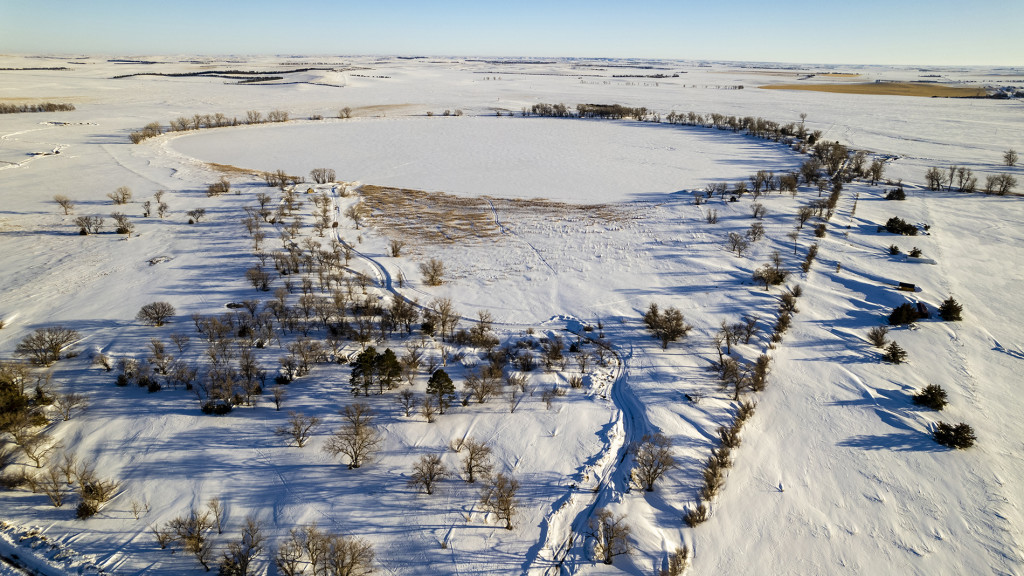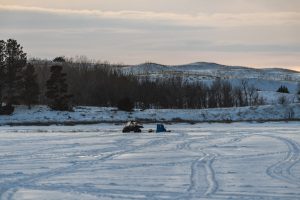
Winter Storm Diaz, the massive blizzard that moved across Nebraska in December 2022, now has claimed less visible victims — countless fish in at least 20 Sandhills and Panhandle lakes.
Low oxygen levels have been recorded in many of the regions’ shallow, highly vegetated lakes, said Al Hanson, fisheries supervisor for the Nebraska Game and Parks Commission’s northwestern district. As anglers are reporting dead plants and fish on their underwater cameras, people making long trips to Sandhills lakes for fishing in the near future likely will be disappointed.
Winterkills can occur when snow is deep, ice is thick and ice is covered by snow for a long time, Hanson said. These variables combined prevent light from reaching the plants below.

“When the photosynthesis stops, imagine that as a big hay meadow down there and all that hay has died,” he said. “As it decays, it creates hydrogen sulfide, reduces oxygen levels, and creates toxic conditions for fish and other aquatic species. Unfortunately, we can’t do anything about it.”
Low water levels from drought have worsened the problem.
Oxygen tests administered by Hanson and his coworkers have found numerous lakes below the level at which fish begin to die, about 1½ parts per million. The list of sites suspected to have significant winterkill include most of the lakes on the Valentine National Wildlife Refuge; Walgren and Cottonwood state recreation areas; Smith Lake, Shell Lake, Avocet, Frye and Defair wildlife management areas; and Smith Lake, Island Lake and Crane Lake on the Crescent Lake National Wildlife Refuge.
Others, such as Box Butte and Lake Minatare state recreation areas, Whitney Lake wildlife management area, Winters Creek Lake on the North Platte National Wildlife Refuge, were found to have sufficient oxygen levels.
After the ice melts, fisheries staff will conduct surveys to assess winterkill severity. Hanson is hopeful some fish have survived to serve as breeding stock for coming years. Based on survey results, Game and Parks will prioritize lakes that need initial restocking with largemouth bass, bluegills and yellow perch, and hatcheries will do their best to meet demand.
He is optimistic the lakes will recover and offer outstanding fisheries as they have in the past.
“In three growing seasons, we can have perch up to 10½ inches in these lakes. Bluegill get about 7 inches and bass about 12 to 14. We’ll rebound, but it’s not going to be a one-year thing.”
Hanson said this winter is similar to those of 1996-’97, 1984-’85 and 1978-’79, when prior large winterkills occurred.
The post Low oxygen causing problems for Sandhills lakes appeared first on Nebraskaland Magazine.
















